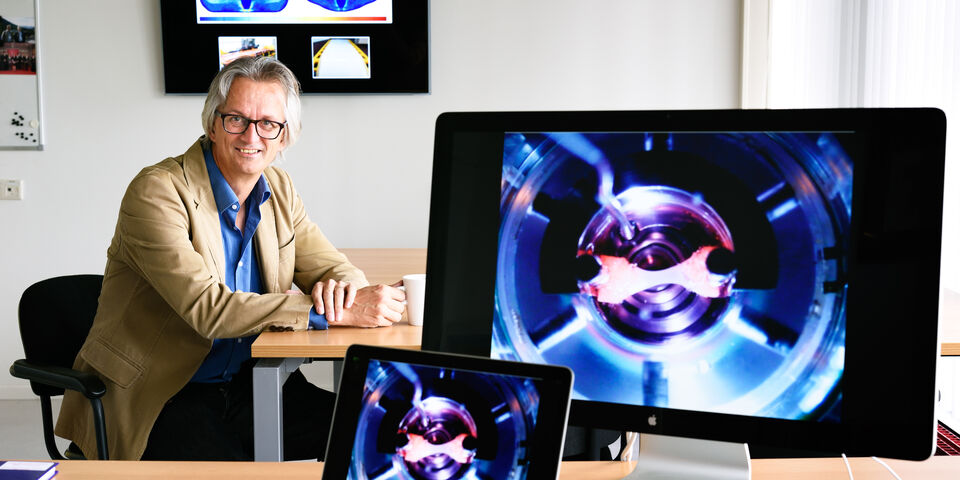Touching the spot
Pressure ulcers or bedsores, which are called decubitus in medical jargon, form a major problem for numerous patients in hospitals and nursing homes. Biomechanical engineer Cees Oomens is an expert in the field of pressure ulcers. Last month he was granted an ‘Experienced Investigator Award’ by the European Pressure Ulcer Advisory Panel for his merits in this area, and since September 1 he has been promoted personal professor of Biomechanics of Soft Tissues.
Bedsores? Is that not an ailment which only elderly, critically ill or paralyzed people get due to lying in the same position for days on end? It appears that this impression is not entirely justified. Indeed, pressure ulcers may develop within a time span of several hours, provided the pressure is high enough. And it does not take any instruments of torture. A hard chair will do the damage, as expert Cees Oomens explains.
“Just try to sit really still on a hard chair for ten minutes at a stretch; you won’t manage that”, says the professor. Which is just as well. The pressure may cause cells to die in less than no time. In this way, a wound may develop on the inside (close to the bone) and subsequently grow outwards within a few days until a fist-deep hole becomes visible. “If you are unfortunate, such a wound may even develop within a couple of hours, for example while undergoing surgery on an operating table. From the time of its genesis until the moment when the skin bursts, there is a period of some 48 hours available to limit the damage. For this reason, the early detection of such an invisible, beginning pressure ulcer is an important research goal for us.”
That decubitus can occur so rapidly was a surprise to the researchers as well. Oomens, who in the 1980s obtained a doctorate on this subject as a physicist at the University of Twente, resumed his research into pressure ulcers in the mid-1990s. Together with other researchers including Carlijn Bouten, who is currently head of the Soft Tissue Biomechanics & Tissue Engineering group of which Oomens forms part as well, he demonstrated that cells can be killed even through relatively mild, short-lived compression, without any change in the supply of oxygen or nutrition. “It was thought that decubitus always occurs as a result of so-called ischemic cell death: by compressing the blood vessels, no more oxygen and nutrition can get to the cell. However, that process takes hours rather than just a few minutes, as we saw. So apart from ischemic damage there is another, faster form of damage, which is caused purely by deformation.”
For the period until his emeritus status Oomens nourishes further ambitious plans: “My dream for the future is a sensor that you can build into a wound dressing or nightclothes, which monitors the condition of the skin. This can be done among other things by measuring lactates in the sweat; this is possible even today. We would like to add to this option by measuring cytokines, i.e. substances involved in wound healing. Cytokines are more difficult to detect, though, because they occur in very low concentrations. By means of a sensor you could intervene preventively.” For what is true for other disorders applies to pressure ulcers too: prevention is better than cure.


Discussion